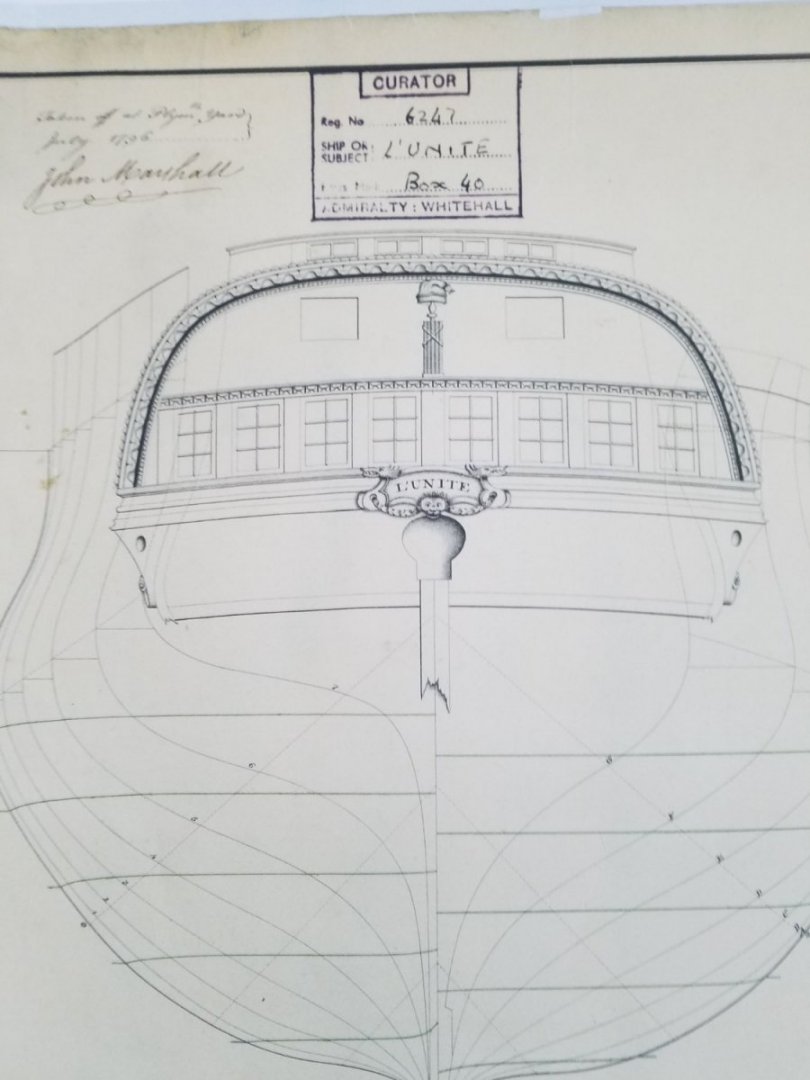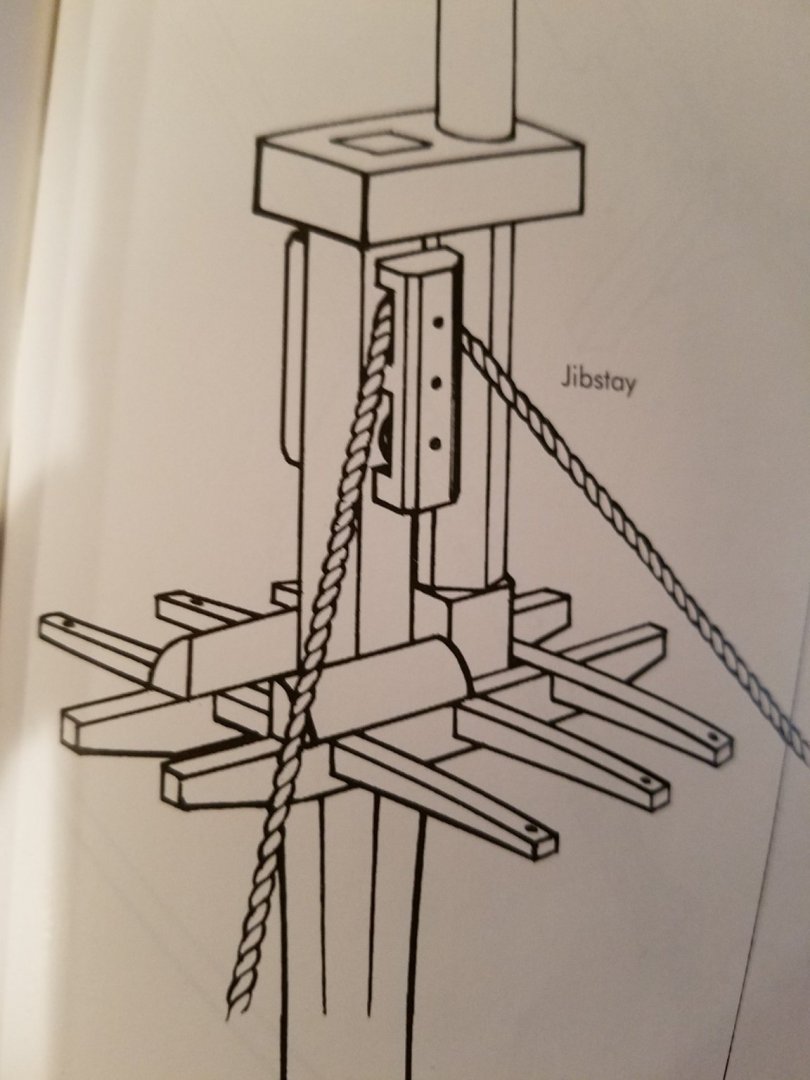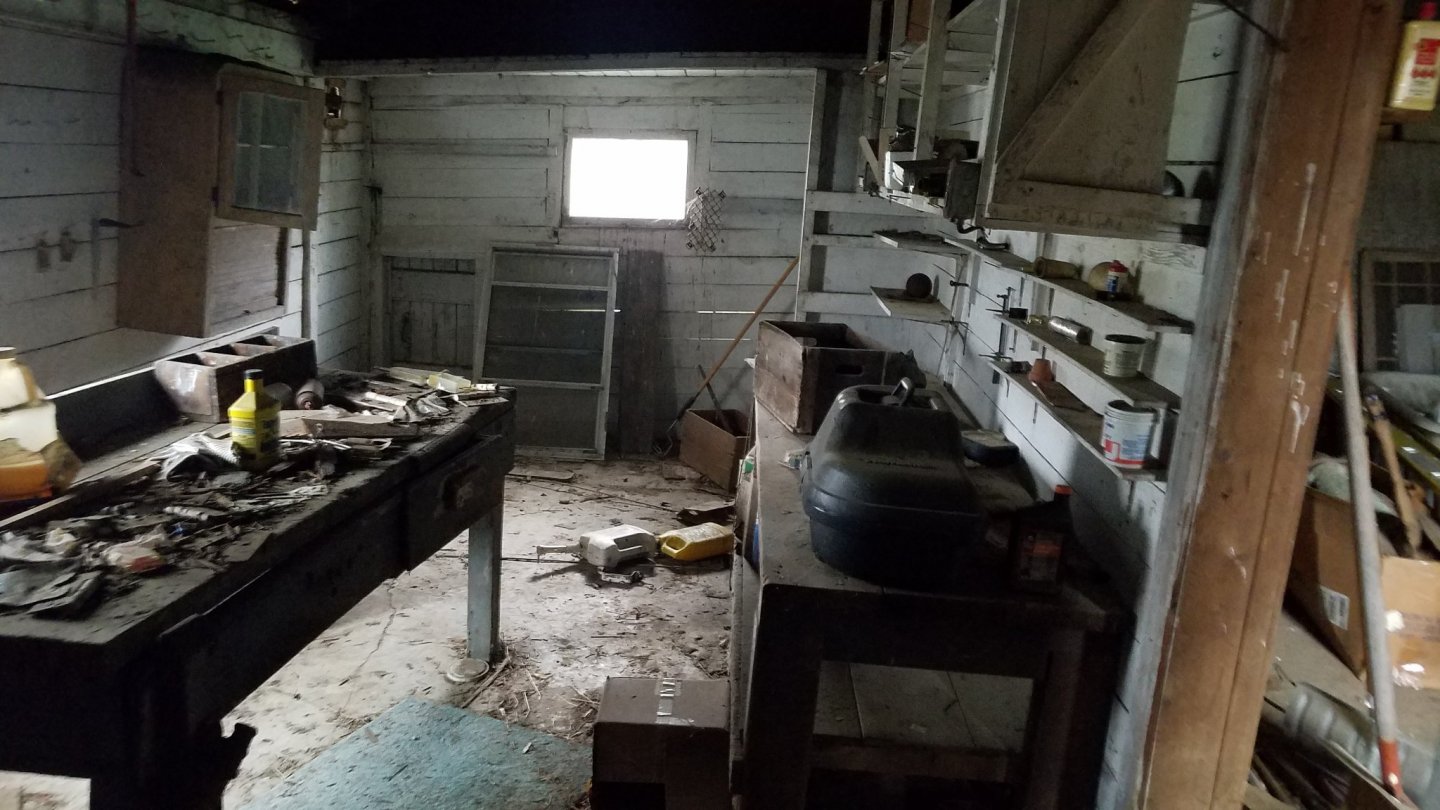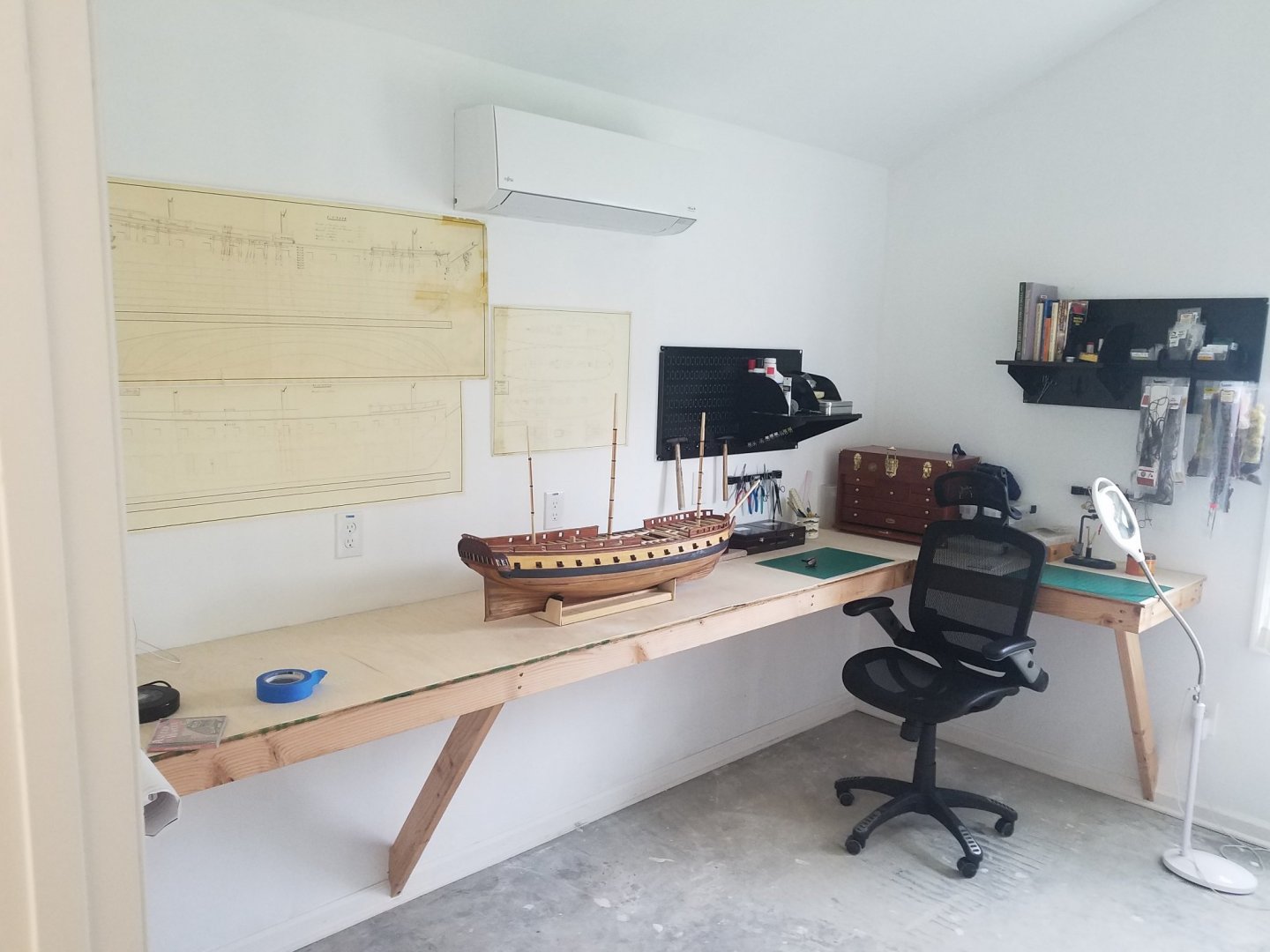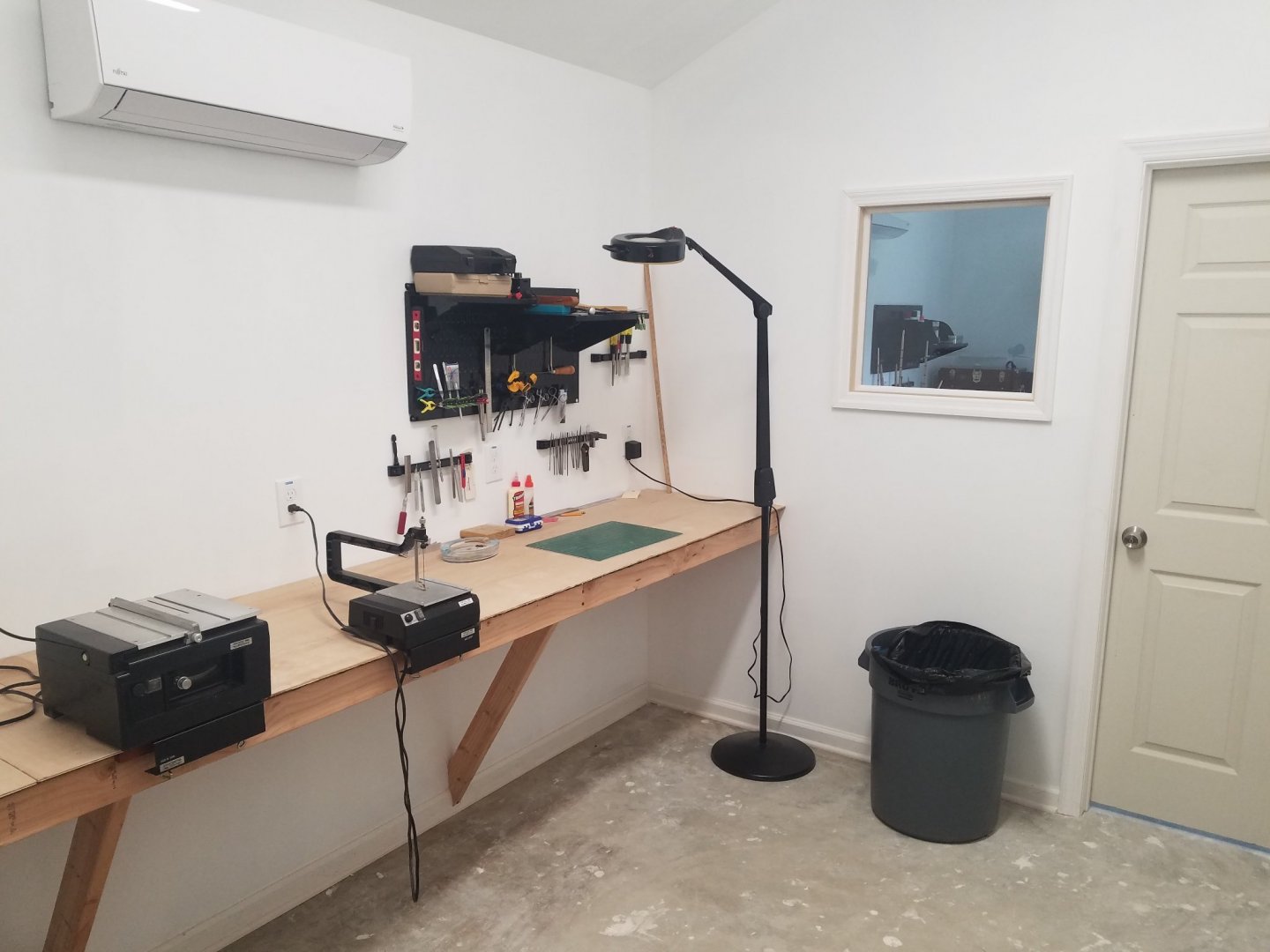
barkeater
NRG Member-
Posts
404 -
Joined
-
Last visited
Content Type
Profiles
Forums
Gallery
Events
Everything posted by barkeater
-
I'm building the U'nite 1797 as refit by the British. She was a captured French vessel. I have both the "as taken" and "as refit" plans. The dockyard removed a hog back cabin and railings on the weather deck and replaced the railings which shows in the refit drawings. My question concerns the Phrygian cap and bundled sticks on the stern. Since these are symbols of the French revolution would the dockyard have removed them? The refit drawings do not show the stern. It would have been a great ruse de guerre. I also don't know what I would replace them with since I would like to keep the same approximate size. Do I go with what I know was there before the refit or make something up? I'll probably go with the Phrygian cap and bundle but I would be interested in opinions. Thanks. Richard
-
Congratulations and nicely done. I enjoyed following your log.
- 81 replies
-
- Bluejacket Shipcrafters
- Yankee Hero
-
(and 1 more)
Tagged with:
-
This makes it 4 for down.
-
Very nice. The thing about model ship building is that there are so many different tasks. Just when you've got planking down it's time for something completely different like rigging.🙂
- 81 replies
-
- Bluejacket Shipcrafters
- Yankee Hero
-
(and 1 more)
Tagged with:
-
Dave, Hopefully those brass rings look like eye bolts otherwise you are going to have problems😁. You are correct, superglue (cyanoacrylate) is what you want to use gluing metal. As to breakage, I've never had a problem with kit supplied rings/ eye bolts. They may bend but unless you really use a lot of force, I can't see them breaking. For scratch building I use silver wire which is stronger than craft wire. Richard
-
Bill The picture of the stock sheet you show is a pretty standard top which you should be able to copy. There are a lot of books on rigging if you can't find what you want for free by search. Rigging: Period Ship Models by Lennarth Petersson shows a similar top and is on Amazon in a kindle version for $11.99 ($36.70 for hardcover). There are a lot of books on rigging so look around, but I believe you could use this one to make the top you show, and it is relatively cheap. It is also a good book for other rigging details in a general fashion but does not go into changes in masting and rigging over time as some of the more voluminous and scholarly works do. Again, look around and see what you feel would be most helpful to you. Richard
-
Welcome to MSW and enjoy. I'm a little quicker on building models but not much as I'm coming up on 4 years on my current build with years to go.
-
Why masts are square at the top?
barkeater replied to Tommy Vercetti's topic in Masting, rigging and sails
Tommy, As Mark noted masts are quite a wide topic and different masts and yards show different shapes. They also changed over time. If your question is in regard to mast caps, the following illustration from Petersson's "Rigging Period Ship Models" may be helpful. Here the main mast is squared off to sit into the mast cap. The top mast is first square to sit on the trestle tree, then becomes octagonal before being rounded off to fit through the mast cap. Richard -
Painting them black would give you more contrast and help them stand out. Just a thought. Richard
- 81 replies
-
- Bluejacket Shipcrafters
- Yankee Hero
-
(and 1 more)
Tagged with:
-
I use 5x glasses. I paid about $10 on Amazon. I like these compared to magnifying lamps because I can change my field of view without having to move the lamp. Richard
-
Finally a dedicated work shop
barkeater replied to barkeater's topic in Modeling tools and Workshop Equipment
Cisco, What I did was tear down and replace a shed which was attached to my barn. The barn from around 1860 is in good shape with wooden pegged construction including main beams up to 39 inches. The shed was a later add on probably 1940's and was poorly done and had no footings or foundation being built directly on the dirt. It was a tear down so I used the footprint to design the new shed with the help of an architect. I did have to get permits but by using the existing footprint there really could be no objection as long as I built to code which we did. As to lighting, you will want more than natural light as discussed above. Good luck on you workshop project. Richard -
Finally a dedicated work shop
barkeater replied to barkeater's topic in Modeling tools and Workshop Equipment
Thanks for the tips. Not in the pictures are high output 4 foot shop lights in the ceiling of both rooms. In the last picture note the brightness. There is no window in this room to the outside with the only window being into the other room which itself has only one window. Without the light on, this room is very dark. I kept the windows to a minimum to give me the most bench/wall space. I moved the two floor lights from the house to get them out of the house but so far have not needed them for modelling but have used the one next to the window when tying flies as I tie a lot of micro flies. I also wear 5x glasses both tying and working on my model. As for pedal controls, I had a Fordom with foot pedal whose motor gave out after long time use. I used to carve decoys with it but don't see any use for it with the way I make models. I do have a Dremmel and a Craftsman rotary tool without foot pedal but use them infrequently. I do have a fold down bracket but use it to hang my waders. My shop vac in the sawing room is not in the picture. Since the other room is set up as a clean room where any dust creation is to be kept to a minimum I can't see cutting a hole in the wall. I do need to look into a dust trap for my sawing. Richard -
Might I also suggest for your reading list Bloody Mohawk by Richard Berlith which covers the Mohawk Valley and the NY frontier from before the French and Indian War through the Revolutionary War and The British are Coming by Rick Atkinson the first of a trilogy. I'm still awaiting the second installment. Richard
-
Welcome to MSW. I grew up in upstate NY (Gloversville). Thank you for your service. Since you are in Saratoga, the Philadelphia from the battle of Valcour Island may be of interest, Richard
-
Welcome. As Chris said, a great way to start would be to search" first finished builds". Also if you l look there are threads under ship model kits which would be helpful and there are discussions on which company puts out the best products including instructions.
-
After years of building with equipment all over the house which I had to drag out and then store again, I now have a dedicated shop. Yippee! I replaced the original structure which was a shed attached to my barn with the new structure which has heat and air conditioning as well as exhaust fans. I split it into two rooms one of which is for sawing, filing and anything which creates dust. The other room is for metal work and assembly. I also included a fly tying table as I am an avid fly fisherman. I still have plenty of room left over to add tools. I'm thinking of a thickness sander but I don't need it yet. Richard
-
It is tough to tell from the picture if you have enough info. I do see sheer lines which should make constructing the hull possible using bulkheads and this would be another option other than a solid hull. First decide your scale. If you are not going to use the scale given which I believe is 1/96 by my math then figure out the correction needed (say 200% enlargement if you go 1/48). Have the plans enlarged and copied which can be done at an office supply store. Now start making copies on your home printer. Cut out each individual sheer line remembering to subtract for the thickness of the plank(s) you are going to use as sheer lines are from the outside of the hull. Since sheer lines are half hull you will need to make these into full hull by matching two 1/2 copies and the make a full width copy with your printer. Glue these to plywood and cut out your bulkheads. Their positions on the keel I believe are given but it is tough to see in the picture. From the looks of it you are going to have to add additional bulkheads in between to allow a smooth flow of your planks. To do this make additional bulkheads using the broader of the two where they are going to sit in between. These will be oversized. Now fare all bulkheads down so you get a smooth run for your planks and you should be able to start planking. Richard
-
This is what it’s like to be a newbie
barkeater replied to Laggard's topic in Masting, rigging and sails
There is no such thing as a perfect model. Richard -
A goniometer would also be helpful. A cheap plastic bendable one would be all you need.
-
Planking Question
barkeater replied to Malazan's topic in Building, Framing, Planking and plating a ships hull and deck
Glenn, loved the architectural drawings you had framed. I'm looking forward to doing the same with my current build but am still using it for measurements. Rich -
Planking Question
barkeater replied to Malazan's topic in Building, Framing, Planking and plating a ships hull and deck
I agree with DR PR on single planked models but if you are doing a double planked model the extra spacing between bulkheads is not a problem. For newbies I would recommend a double planked model. The first planking will allow you to learn before you put on the second planking. For the first planking use longer strips as it will go faster and it won't be visible on the finished model. You can add a false bulkhead say half way between the original bulkheads. Just mark where your bulkheads are by drawing a line over your first planking as you go along. (In fairing or shaping of bulkheads it is imperative that you do a good job in making sure that the planks are in contact across the full breadth of the bulkhead and that there is a smooth fit along multiple adjacent bulkheads. It will save you a lot of grief later and help prevent kinks and uneven spots.) Once you have the first planking done your model should have multiple straight lines going perpendicular to for and aft. Now just take a ruler and measure out in this example 1/2 half distance between bulkheads and pencil in a false bulkhead between the lines you have already drawn on your model. You have doubled the number of bulkheads and since you are attaching plank over plank you have a solid base which will allow you to plank the finished model in scale if you so desire. There are lots of different ways that work in building these models and you just have to find what works for you. Good luck. Richard
About us
Modelshipworld - Advancing Ship Modeling through Research
SSL Secured
Your security is important for us so this Website is SSL-Secured
NRG Mailing Address
Nautical Research Guild
237 South Lincoln Street
Westmont IL, 60559-1917
Model Ship World ® and the MSW logo are Registered Trademarks, and belong to the Nautical Research Guild (United States Patent and Trademark Office: No. 6,929,264 & No. 6,929,274, registered Dec. 20, 2022)
Helpful Links
About the NRG
If you enjoy building ship models that are historically accurate as well as beautiful, then The Nautical Research Guild (NRG) is just right for you.
The Guild is a non-profit educational organization whose mission is to “Advance Ship Modeling Through Research”. We provide support to our members in their efforts to raise the quality of their model ships.
The Nautical Research Guild has published our world-renowned quarterly magazine, The Nautical Research Journal, since 1955. The pages of the Journal are full of articles by accomplished ship modelers who show you how they create those exquisite details on their models, and by maritime historians who show you the correct details to build. The Journal is available in both print and digital editions. Go to the NRG web site (www.thenrg.org) to download a complimentary digital copy of the Journal. The NRG also publishes plan sets, books and compilations of back issues of the Journal and the former Ships in Scale and Model Ship Builder magazines.

